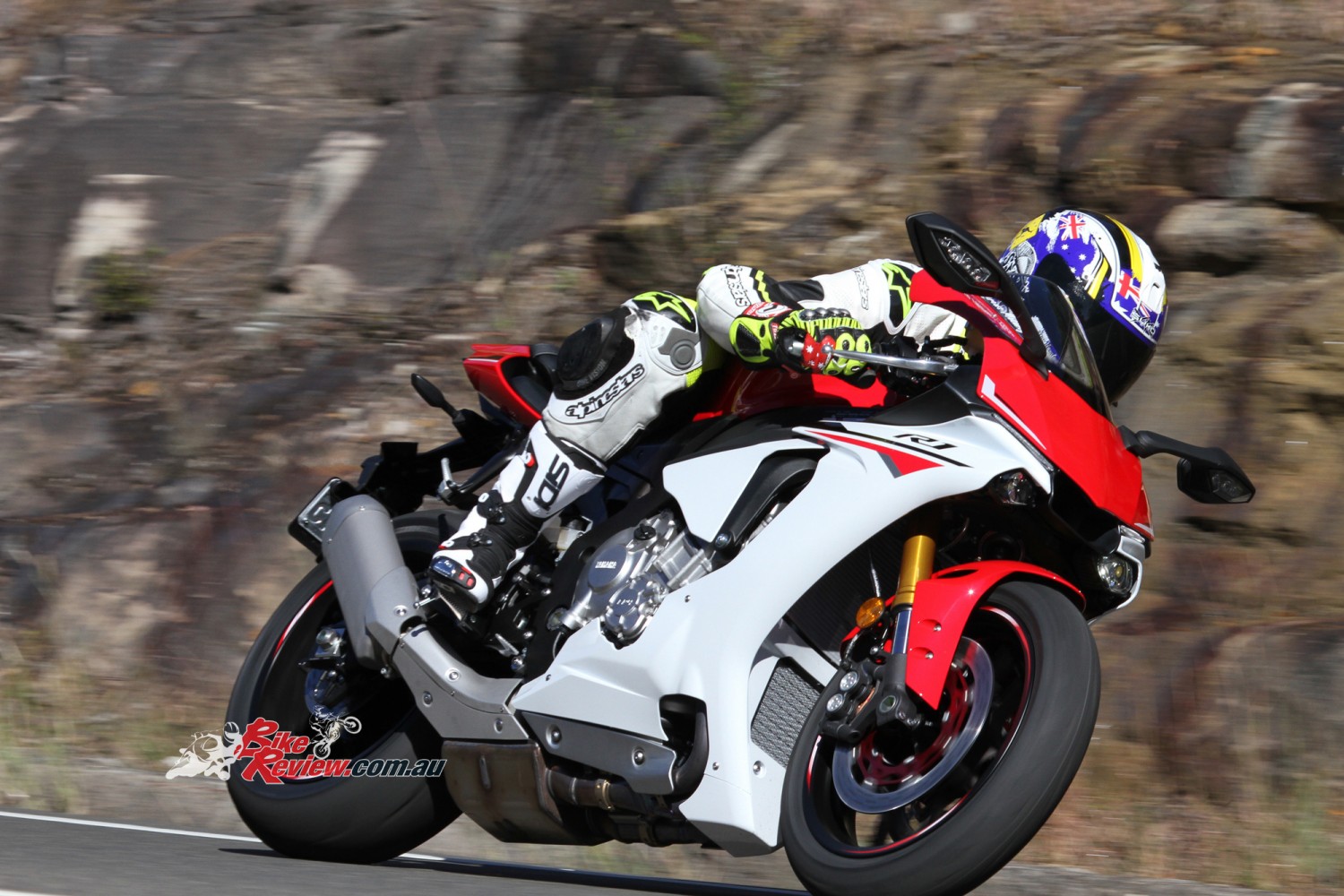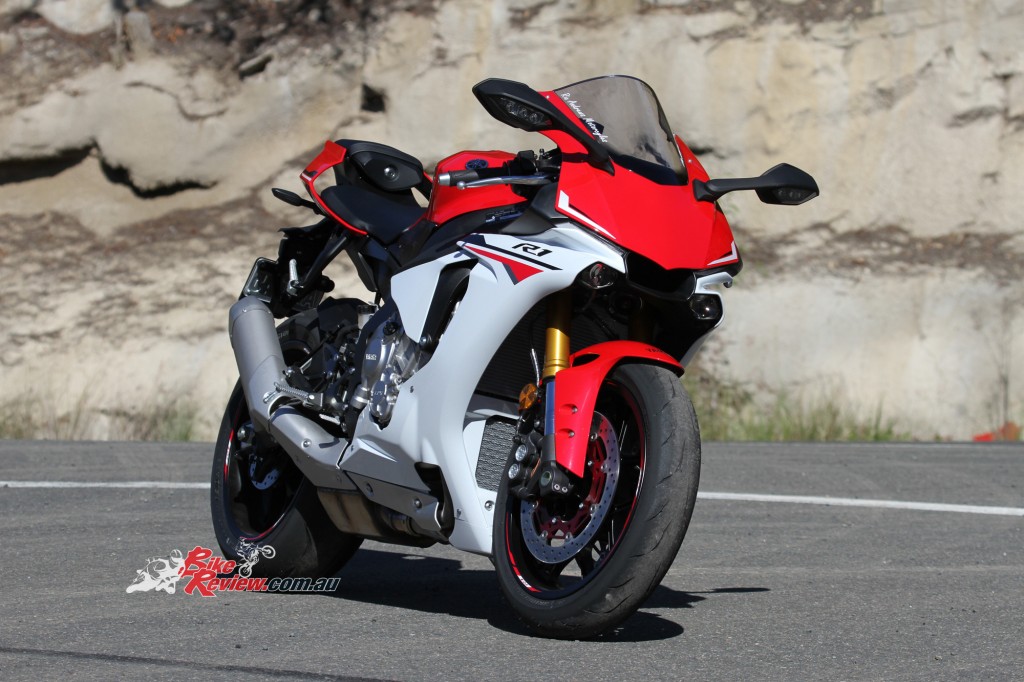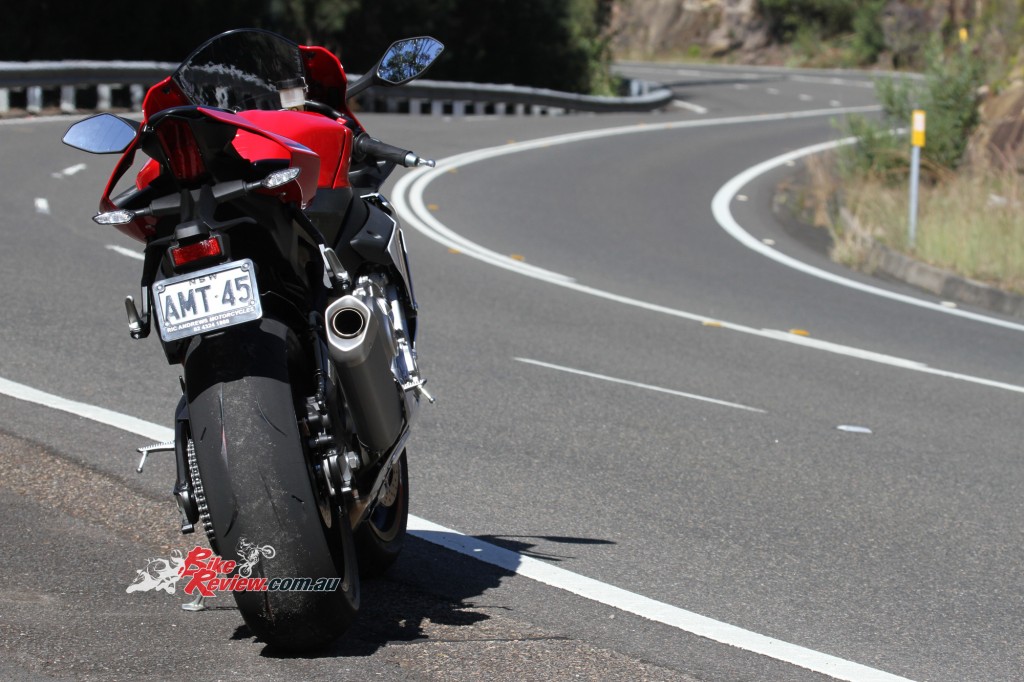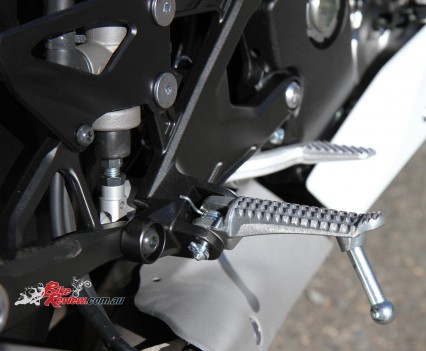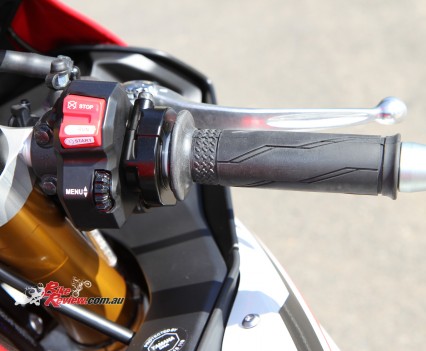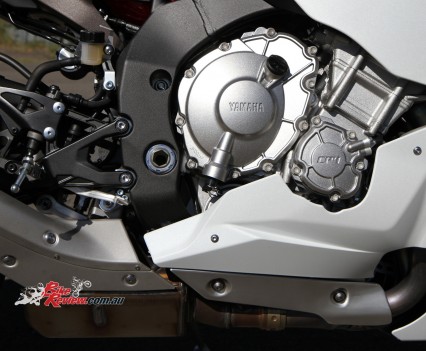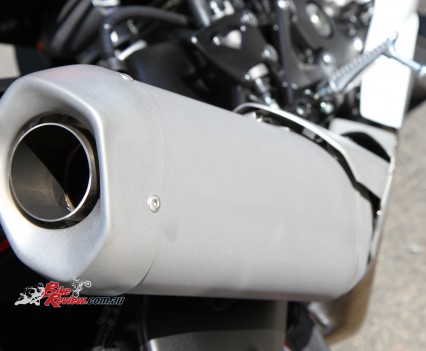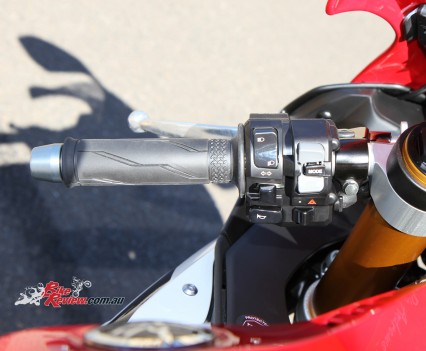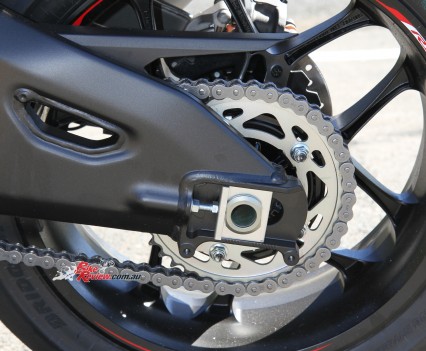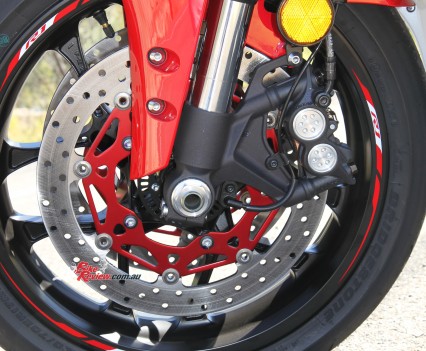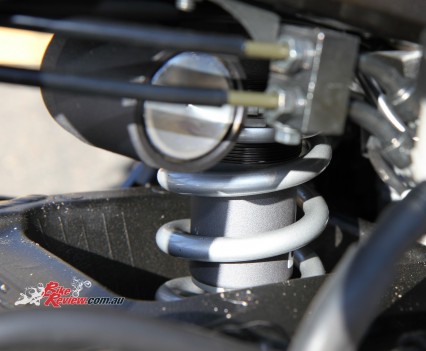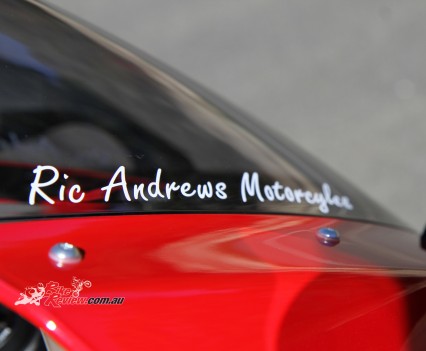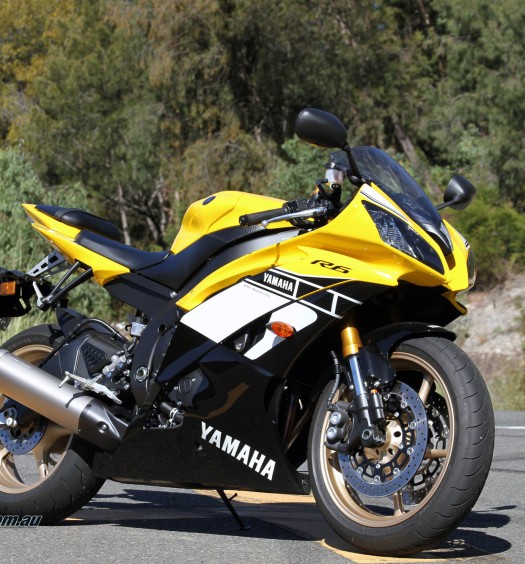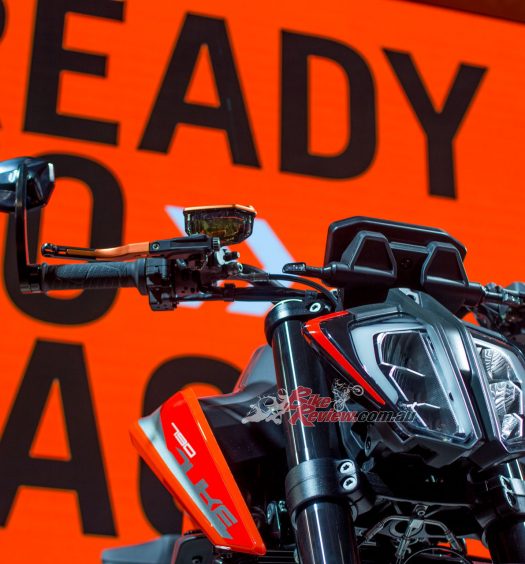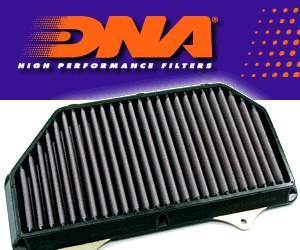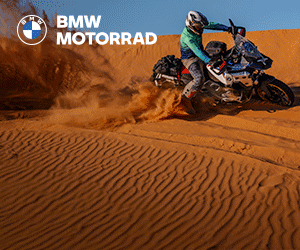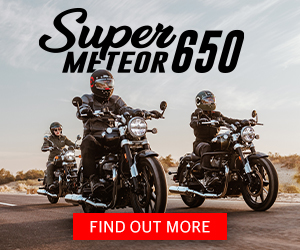After the track only world launch, we test the YZF-R1 on the road. Here's our full 2015 Yamaha YZF-R1 review. Test by Jeff Ware Photography by Heather Ware
I mentioned in my World Launch Report on the YZF-R1, I’ve had the pleasure of having lived with four YZF-R1 in the past. I had a 2005 model, followed by a 2007 model then a 2009 big bang and a 2012 big bang – all long termers supplied by Yamaha’s Sean Goldhawk.
The latter bikes were fantastic street bikes. The 2005 and 2007 models were also great street bikes but more track focused than the 2009 and 2012 models.
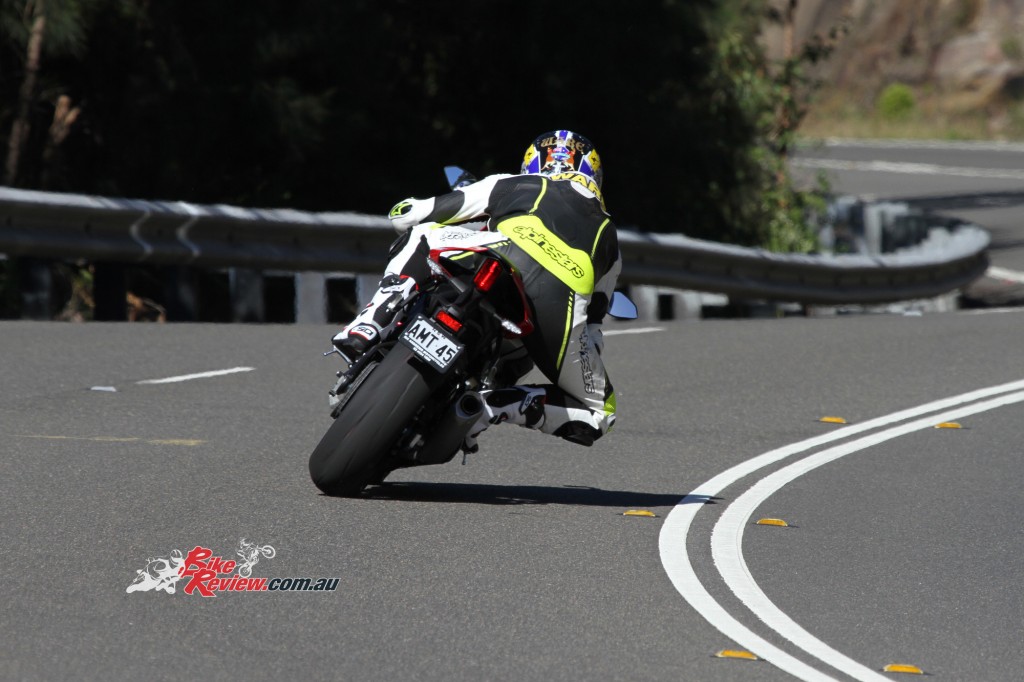
It is not just the power that impresses and thrills; it is the rapid acceleration that really stands out and above 11,000rpm the bike keeps revving like mad!
After riding the 2015 bike my first thought was, “There is no YZF-R1 generational familiarity at all. The reach to the ‘bars is 55mm further now and 10mm longer to the ‘pegs. However, ‘pegs to ‘bars is reduced 5mm. There is plenty of room but I still feel too big for the bike. The fuel tank is low and it almost feels like there is no fuel tank there. The seat is great – soft, wide, flat and roomy. The ‘bars are in a position that puts a lot of weight on them.”
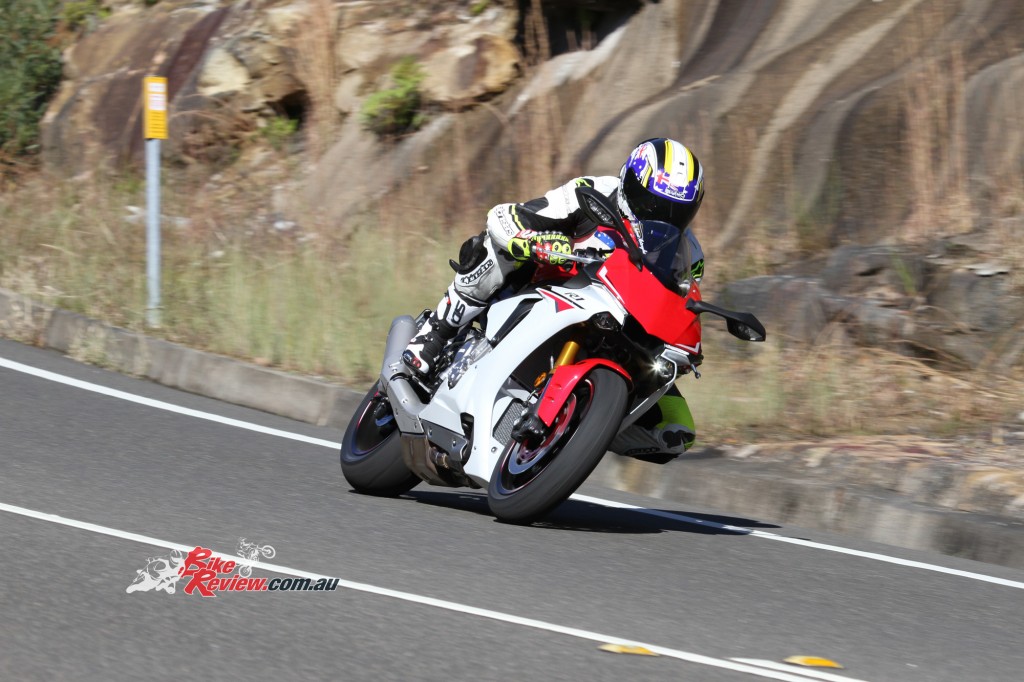
I could easily have been fooled into thinking I was on the world’s most powerful YZF-R6 such is the diet that the R1 has been on.
After the launch I was eager to get one on the road. As Yamaha did not have a press bike available until too late in the year, my local Yamaha dealer kindly allowed me to borrow their brand new demo bike for this test – so a big thanks to Ric Andrew’s Motorcycles, particularly Warren Toombs and dealer principal Peter ‘Woody’ Wood.
ON THE ROAD: 2015 YAMAHA YZF-R1
Red and white. Is there any other colour a Yamaha sportsbike should be? Not in my opinion, well, aside from speed block yellow and black ala Kenny Roberts. In the past I’ve owned a red and white RZ250 FN, red and white TZR250, red and white FZ750, red and white 2007 R1, red and white RZ125 (still do). When I was 10, I had a red and white Tamiya model of an RZ500…
Motorcycles are as much about a connection as they are about performance, practicality, price or quality. First and foremost, if you don’t like a bike before you even ride it, there is little chance it’s the bike for you…
As Warren Toombs (yep, happens to be the son of the late legend Ron), gave me the rundown on the electronics and so forth, a brush up since the launch had been over three months earlier, I already liked the bike more than the one I rode at the launch. Why? The colours. Much more appealing and it brought back great Boy Racer memories.
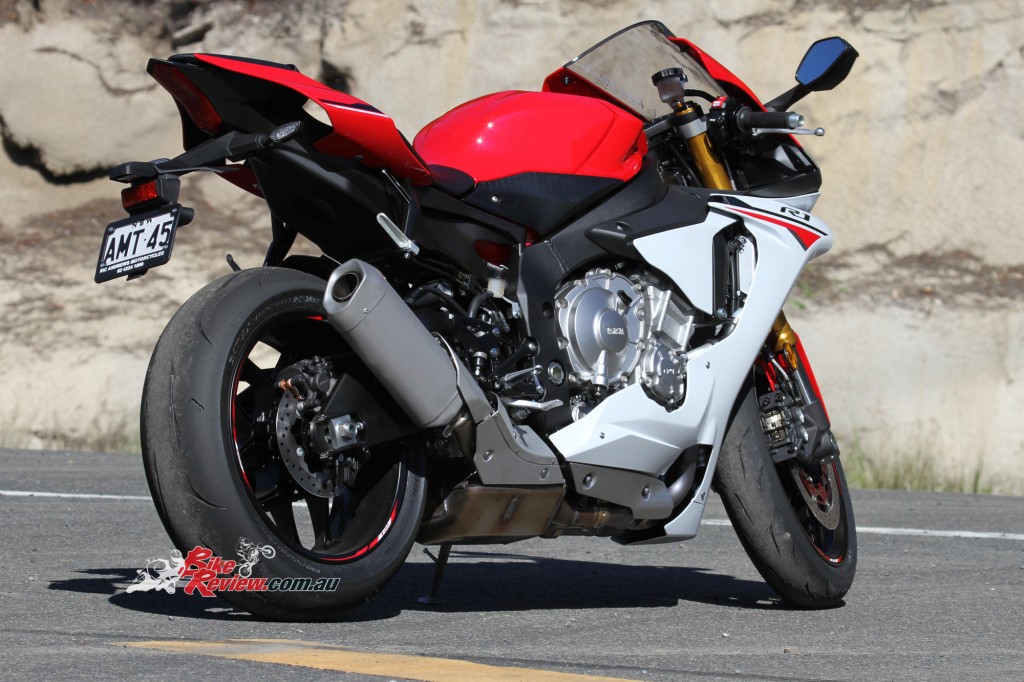
The new exhaust system is mainly titanium – saving weight, with the exhaust note not quite carrying the same effect as the previous big bang configuration.
There and then I decided to take the YZF-R1 on my old loop I’d take to work at Len Willing Motorcycles when I was an apprentice on my red and white TZR, back in 1993. A few good laps of the Old Road, then Peats Ridge, Kulnura, Yarramalong Valley, Hue Hue, then I’d M1 it back and try some town riding…
I hit the starter button, a new style kill/start design, and let the bike warm up while I gear up. It idles with an aggression and rumble like no previous R1. Not the same depth as the previous big bang but a mix of that and a screamer. It’s a great sound…
I hop on and get familiar again, pop it in first and head off… the bike feels small straight away.
Within a few kilometres I hit the first set of twisties and by the time I’m at the top of the hill I’m impressed. The set-up out of the box is better than the set-up at the World Launch. This bike feels much more balanced and not as pitchy at all. That is a big tick on my notepad…
I arrive at the start of my test loop and pull over. I set the YZF-R1 to Mode-A but reset PWR to level 2. I already knew from the launch that this combination gave the smoothest throttle. Any other combo results in a snappier throttle, particularly PWR 1. I also put TCS to 3 for the road and leave it as is for the remainder of the test.
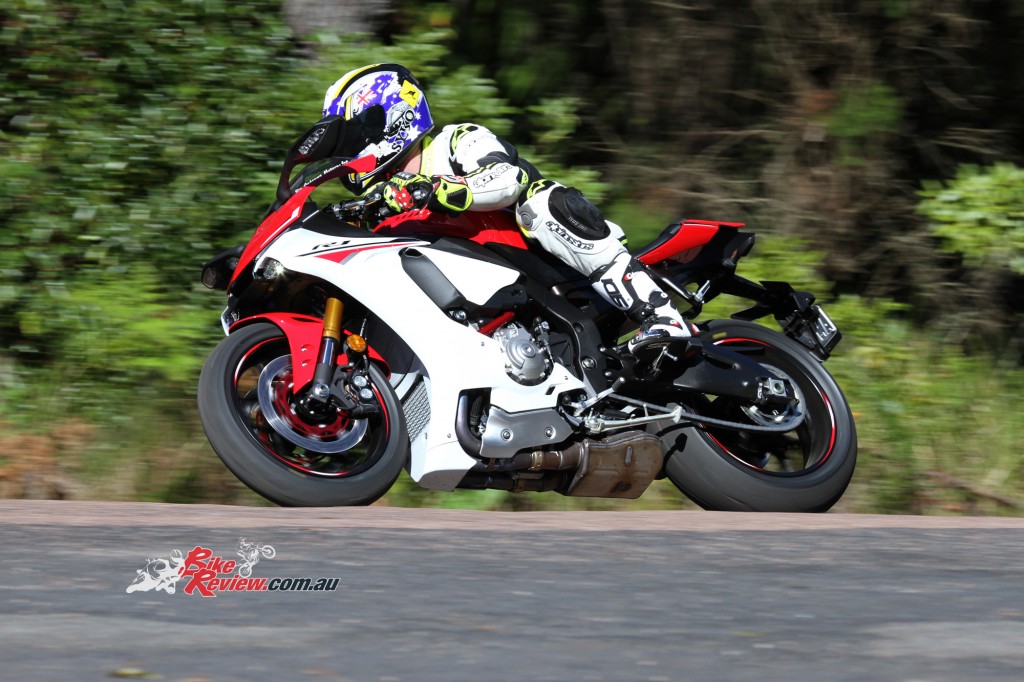
There is plenty of room but I still feel too big for the bike. The fuel tank is low and it almost feels like there is no fuel tank there making me feel a bit exposed.
At the track the R1 felt peaky, however, short-shifting and using that crossplane torque is proving rewarding as I attempt to enjoy my local road without risking being locked up – it has gone from a 100 zone to a 60 zone over the past decade…
The gearbox action is brilliant and the revised ratios nice and close together and more suited to road use than the outgoing ratios. The same can be said for overall gearing, it does not feel as tall as the previous model, which really laboured in top gear and also needed a lot of clutch slip in first to get going.
The Bridgestone RS10 tyres that are standard equipment on the YZF-R1 (we used RS10R at the launch) are a fantastic road tyre and give fantastic feel particularly from the front tyre on a range of surfaces. Bump absorption is good and they have a really nice rolling feel on the road that promoted confidence. I had the opportunity to sample them on damp and dry roads and came away impressed.
The engine is smooth, with a raspy exhaust note and heart-pumping induction roar, and power delivery not as steppy as it was on the bike I rode on track. There is some throttle snatch, however, it is fine and not as intrusive as on other settings. With YCC-T and EXUP and variable inlet lengths there are quite a few things opening and closing on the YZF-R1, meaning a perfectly linear power curve is not the end result, however, it is all controllable and overall a nice road engine at this steady pace.
I’m finding it easy to ride as I carry rolling speed on the bike, mainly in the mid-range. The brakes, although they have incredible initial bite that takes some time to get used to, are very controllable and sensitive to small inputs of pressure modulation.
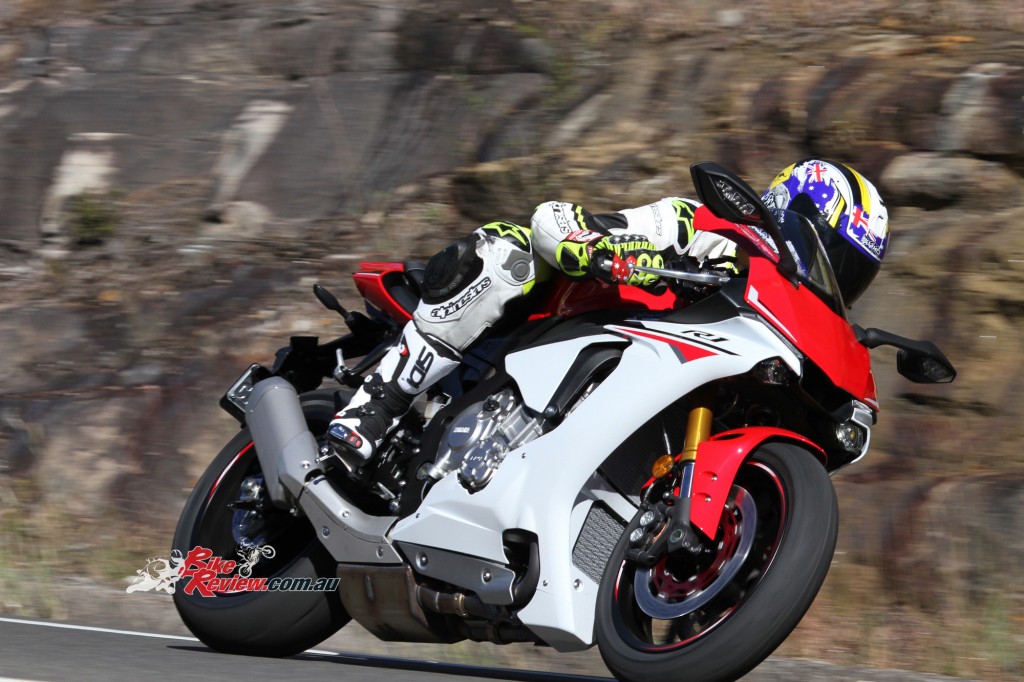
Throttle snatch that was initially experienced at the track during the launch is much reduced on this model.
The forks have a good balance of spring support and damping control and are doing a fantastic job of riding the bumps while still giving support. Initial turn-in is fast and accurate yet the bike follows through the turn in a smooth, tracking arc and is stable and predictive at full lean, as well as during the transition from upright to full lean – it doesn’t ‘fall’ on it’s side, rather it progressively leans at a nice, controllable rate of lean, responding communicatively to either ‘bar, ‘peg or body inputs.
Turn-in on or off the brakes is stable, accurate and sure-footed. Out the back the shock, like the forks, offers good support yet still soaks up the bumps and the bike does not run wide off turns, in fact, it has exceptional drive out of corners, the 190 R10 really hooking up. Overall, a pleasure to ride at this pace, fast to medium, your average Sunday morning blast…
I up the pace and start to rev the engine more, snicking gears with the brilliant QSS (Quick Shift System). The bike transforms into a wild animal! It fires off turns so fast, my brain at first struggles to take everything in, with the rock walls and trees a blur, making the road a real tunnel. The YZF-R1 suddenly feels smaller, lighter, more compact and angry as I start to hang off and ride it harder.
Into turns, hard on the brakes, the back wants to come around. The bike skips over bumps and turns in amazingly quickly. As soon as I’m in a corner, I’m trying to get ready for the exit. Out of the turns the front gets light, the ‘bars wiggle as the front wheel skims the surface and the engine screams to peak rpm as fast as my foot can shift gears! It’s a whole new level of fast…
Hard braking on the road is also hard work, the brakes are that powerful that speed is washed off at an incredible rate, the linked system or Unified Brake System means the rear brake is applied with the front brake, which takes some getting used too.
I prefer the corner speed and rolling speed approach and revert to rolling the throttle on nicely. There is quite a bit of engine braking on offer, just right for the road, and a slightly less than 10/10th pace, say 8/10ths, is really spot on for the bike.
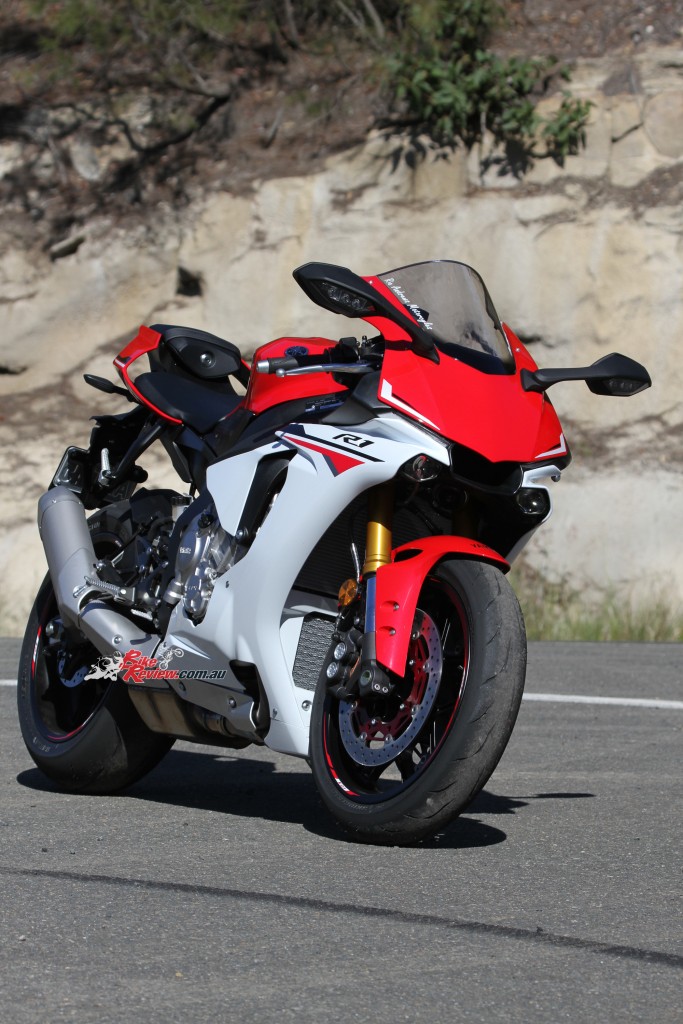
Paint quality is top notch, with stylish integrated indicators in the mirrors which provide limited rearward vision. The seat is comfortable with the tail featuring hollow sections, helping reduce weight and adding to the bike’s aggressive looks.
After a few more laps, I hit the open country roads for my loop. I’m pleasantly surprised at how good the bike is on faster, flowing open roads where I thought it would be too hardcore. There is good protection with the screen and despite the diminutive size of the bike, I find it comfortable while upright. Definitely better for me on the road than the track, where, as mentioned, there is too much weight on the rider’s arms (I spoke with some superbike riders about this and they have also been looking for a solution to the issue).
The bike hums along nicely in top gear, cruising along at 110km/h is vibe free and temperature stable at 83C. It’s a nice, pleasant ride…
Roll-ons from 4000rpm in fourth gear are impressive, the top-end rush is fantastic. I’m going out on a limb here and matching it to the S 1000 RR. The Ducati 1299 would leave both bikes in its wake.
Around town the YZF-R1 is civil and typically Yamaha silky smooth. Clutch action is fantastic, the light and progressive action helped by the three-spring mechanical lock-up system. The engine does not run as hot as the old one, which often cooked legs hovering around 110C most of the time. The dash, in Street Mode, is comprehensive but very small so I could not read much on it without really taking my eyes off the road for too long.
Switchgear is purposeful and well laid out. The roll and click mouse for menu scrolling is fantastic, plus the new kill switch/starter combo is nifty.
The mirrors are good for checking armpit hair but not much else. I could only use them if I lifted an arm off the handlebars… and as for storage, take a backpack. My wallet would not even fit under the seat let alone smokes and a phone…
Small things make a difference, such as the easy to access side-stand, high quality paint finish, great security protection and lightweight maneuverability around town. At $23,490 + ORC, the YZF-R1 is the most expensive Japanese four-cylinder superbike. It is also the most high-tech and the most powerful. In terms of bells and whistles, the R1 offers good value for money in my opinion – if you are into those things.
In summary, the new YZF-R1 is purely built for performance and this time no street luxuries at all have been built into the bike, however, it does a remarkably good job as a modern street sportsbike. I guess you can never judge a book by its cover…
For full technical breakouts see our full track launch report.
SPECIFICATIONS: 2015 Yamaha YZF-R1
PRICE: $23,499 + ORC
WARRANTY: Two-year/unlimited kilometre
COLOURS: Blue and Silver, Red and White
TEST BIKE: Ric Andrew’s Motorcycles (02) 4324 1800
CLAIMED POWER: 147.1kW[200hp]@13500rpm
CLAIMED TORQUE: 112.4Nm[82.9ft-lbs]@11500rpm
CLAIMED WET WEIGHT: 199kg
ENGINE: Liquid-cooled, four-stroke, crossplane forward-inclined parallel four-cylinder, four-valve per cylinder, DOHC, 79 x 50.8mm bore x stroke, 998cc, 13.0:1 compression, banking sensitive TCS/SCS, LIF, LCS, QSS, PWR power modes, YCC-I, YCC-T, six-axis IMU, magnesium oil pan, titanium four-into-two-into-one exhaust
GEARBOX: Constant mesh, six-speed
CLUTCH: Assist and Slipper clutch, wet, multiple-disc
CHASSIS: Aluminium Deltabox frame, aluminium upward-truss swingarm, magnesium sub-frame, Rake: 24, Trail: 102mm
SUSPENSION: 43mm KYB fully adjustable telescopic forks, KYB rear shock
BRAKES: Banking sensitive Racing ABS, Unified Brake System, dual 320mm front rotors, dual monobloc four-piston calipers, 220mm rear rotor, single-piston pin-slide caliper
WHEELS & TYRES: Cast magnesium 10-spoke wheels, 120/70 – 17 (f), 190/55 – 17 (r)
DIMENSIONS:
Seat height: 855mm
Overall height: 1150mm
Overall length: 2055mm
Width: 690mm
Wheelbase: 1405mm
INSTRUMENTS: TFT LCD display


